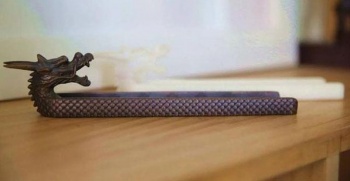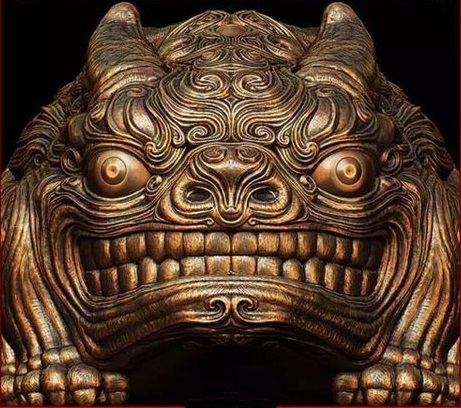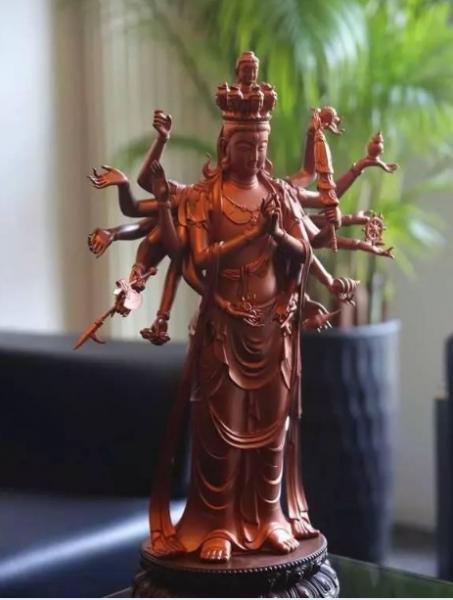
At the Johannesburg Summit of the Forum on China-Africa Cooperation back in December 2015, the Chinese delegation presented a 3D printed tripod sculpture to the African members of the forum. This impressive sculpture took just 20 days to produce, from initial design to 3D printed mold to the final wax casting, and Xian Chizi Digital Technology was behind it all. The company’s work is an innovative combination of traditional Chinese culture and modern technology that really stands out in the 3D printing marketplace.
At university, company founder Xi Xin became particularly interested in sculpture after seeing his professor Chen Yunchang's creation, "The mighty river flows eastward". The sculpture, which won an award at the National Art Exhibition, was touchable and the viewer could look at the sculpture from many different angles. This expressed the artist’s emotions perfectly, and Xin says that he wanted to find other ways to emulate this experience, to share ‘the soul of the sculpture’ with the viewer. 
 In 2005, Xi Xin graduated from the Xian Academy of Fine Arts. He went to Shanghai to work at IDMT Global Digital, before later joining PDE game development company. During these 10 years, he was able to accumulate valuable 3D data production ability. Around 2012, when 3D printing started to capture people’s imagination in a major way, Xi Xin became very interested. He discovered a digital sculpture method - scanning a clay figurine, and fixing the 3D model in the computer. Using next generation game technology, he could produce a virtual 360-degree 3D display of a sculpture. Xi Xin eventually founded Xian Chizi Digital Technology in May 2014, as a wave of 3D printing technology was sweeping the country.
In 2005, Xi Xin graduated from the Xian Academy of Fine Arts. He went to Shanghai to work at IDMT Global Digital, before later joining PDE game development company. During these 10 years, he was able to accumulate valuable 3D data production ability. Around 2012, when 3D printing started to capture people’s imagination in a major way, Xi Xin became very interested. He discovered a digital sculpture method - scanning a clay figurine, and fixing the 3D model in the computer. Using next generation game technology, he could produce a virtual 360-degree 3D display of a sculpture. Xi Xin eventually founded Xian Chizi Digital Technology in May 2014, as a wave of 3D printing technology was sweeping the country.
Chizi Digital Technology doesn’t limit itself to being a single service 3D printing company, instead aiming for cross-industry integrated services. Members of the company include sculpture art experts, 2D and 3D data design experts, 3D printing and scanning experts, and more besides. Xi Xin believes that this multi-disciplinary and multi-technology approach is where the company's core competitiveness comes from. Working from a single set of data, each aspect in the industry chain can influence the others, which produces extra value for clients and customers.
According to Xi Xin, "The company's business can form a five-pointed star, and in the middle is the 3D data. Compared to traditional sculpture, 3D printing... (is) faster and it is quicker and more accurate. The final result, can be large and small: with data, you can get a variety of sizes. Compared to traditional production, it has been regarded as a magic version of "unlimited Russian dolls", and the working environment is also more clean. "
Xi Xin believes that the biggest difference between 3D printing and traditional milling machines (CNC) is that CNC subtraction manufacturing is determined by how the blade moves, which makes some complex manifold cavity integration difficult to process. The new 3D printing manufacturing processes can perfectly solve his problem. Providing data, which can then be optimized by the computer before being sent to the 3D printer, is all that is required.
Customers for cultural and creative products have high expectations regarding the final size of their object, and particularly the details. So instead of an ordinary desktop 3D printer, Xian Chizi Digital Technology has chosen the RS6000 SLA light curing 3D printer, by Alliance 3D Printing Technology Development (Shanghai) Co., Ltd. This has serious advantages in terms of printing accuracy and speed, producing items with smooth surface finishes. It can achieve complex and intricate shapes, has a large build volume and is also highly cost-effective.
When it comes to choosing a 3D printer, Xi Xin is most concerned about the level of accuracy. He believes that there are three factors that affect the accuracy of industrial 3D printers- Z-axis movement accuracy, liquid level control accuracy, and coating system stability.
 The level of fine art skills and expertise, the amount of industry experience, and the quality of the 3D printing equipment are the main factors that make Xi
The level of fine art skills and expertise, the amount of industry experience, and the quality of the 3D printing equipment are the main factors that make Xi  Xin's company stand out from the crowd. The different pieces Chizi Digital Technology produces often have a distinctive Chinese style, and they have been used in a number of tourist attractions in Xian. Xi Xin's customers are primarily from the cultural and creative industries, including one particularly important crowd - sculpture artists. Xian has a long history as an ancient city of culture, and Xian Academy of Fine Arts has been ranked one of the top eight Academies in China. Many of the colleges and universities in the area have opened a sculpture department, and Shaanxi Province’s annual share of the sculpture market reached 100 million RMB, according to estimates.
Xin's company stand out from the crowd. The different pieces Chizi Digital Technology produces often have a distinctive Chinese style, and they have been used in a number of tourist attractions in Xian. Xi Xin's customers are primarily from the cultural and creative industries, including one particularly important crowd - sculpture artists. Xian has a long history as an ancient city of culture, and Xian Academy of Fine Arts has been ranked one of the top eight Academies in China. Many of the colleges and universities in the area have opened a sculpture department, and Shaanxi Province’s annual share of the sculpture market reached 100 million RMB, according to estimates.
Xi Xin understands very well the shortcomings of traditional sculpture processes- the clay sculpture production process, when compared to the precision and efficiency of digital methods, is very far behind. In clay molding, work lines and seams, gypsum bubbles, unknown deformations and many other factors can spoil the final prototype. This will force the artist to rework his sculpture for the perfect result, and this process can be very stressful for the artist. Not only this, redoing the same work several times can lead to cracks and broken pieces, or the sculpture drying out or even collapsing.
 "Many sculptors have created a lot of sculptures throughout their lives, but they have invested in the original work, the manuscripts, and one piece can not be
"Many sculptors have created a lot of sculptures throughout their lives, but they have invested in the original work, the manuscripts, and one piece can not be perfectly and reliably preserved," Xi Xin said. "We can 3D scan their works of clay, and then fix the model in the computer, (which) can be preserved as data and (carried) around. A smaller version of their work can then be printed as a small batch production, to give to others as a souvenir. This form is very popular among the artists. "
perfectly and reliably preserved," Xi Xin said. "We can 3D scan their works of clay, and then fix the model in the computer, (which) can be preserved as data and (carried) around. A smaller version of their work can then be printed as a small batch production, to give to others as a souvenir. This form is very popular among the artists. "


